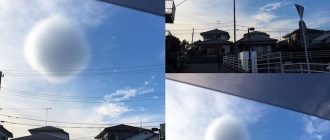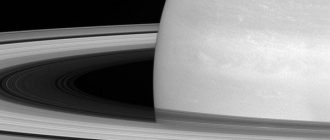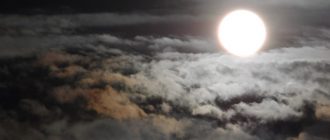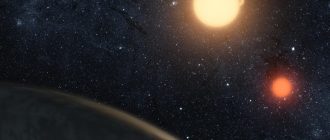
For the first time, astronomers have seen clear evidence of plumes of toxic volcanic gas erupting from Io's volcanoes.
New radio images of Jupiter's moon provide answers to questions about Io's atmosphere.
Io is the most volcanic place in the solar system. More than 400 active volcanoes cover its surface, which is a manifestation of the internal tension of the satellite, since it is gravitationally pulled in different directions not only by Jupiter, but also by three other Galilean satellites of the gas giant.
In the thin atmosphere and on the surface of Io, sulfur dioxide is dominant – yes, sulfur – is spewed out from within. It spews gas through volcanic cracks, and settles on the ground at night, cooling and giving the satellite yellow and orange hues.
But how much of this gas comes directly from volcanoes compared to how much comes from the frozen surface of sulfur dioxide reheated by the sun? It was difficult to quantify.
“It is not known what process drives the dynamics in Io's atmosphere,” said astronomer Imke de Pater of the University of California, Berkeley.
“Is it volcanic activity or the gas that sublimes from the icy surface when Io is in sunlight? We show that volcanoes do have a big impact on the atmosphere. '
Researchers finally have the answers, and at the same time they were able to detect plumes of volcanic sulfur on the moon.
For a world that is constantly leaking volcanic gas, Io's atmosphere is surprisingly thin; most of the gas escapes as a result of complex interactions with Jupiter and its magnetic field at a rate of about 1 metric ton per second, contributing to the formation of a colossal donut of plasma called Io's plasma torus that orbits Jupiter.
The remaining atmosphere can tell a lot about the geological processes inside the Moon, which, in turn, can help us understand some of the dynamics of the planets outside our solar system.
The video shows images of Jupiter's moon Io in the radio spectrum (acquired by ALMA) and in optical light (from the Voyager 1 and Galileo missions) as Io is eclipsed by Jupiter and emerges from an eclipse. The radio imagery shows for the first time plumes of sulfur dioxide (in yellow) rising from volcanoes on Io. [Video courtesy of ALMA (ESO / NAOJ / NRAO), I. de Pater et al .; NRAO / AUI NSF, S. Dagnello; NASA].
If we know exactly the effects of competing gravitational influences on Io and why these influences do not have the same effect on other bodies, we can make more informed inferences about how gravity affects exoplanets too far away to see them well.
So astronomers have used the Atacama Large Millimeter / Submillimeter Array (ALMA) Telescopes in Chile to study Io more closely in radio waves as it moves in and out of Jupiter's shadow.
The first thing they found was that no sulfur dioxide remained in Io's atmosphere. At night the temperature drops below the freezing point of sulfur dioxide.

Color image of Io by the spacecraft Galileo. (NASA / JPL / University of Arizona)
When the surface is exposed to daylight again, the frozen sulfur dioxide sublimates back into the atmosphere, replenishing it in about 10 minutes – much faster than expected.
This strange quirk has proven to be the perfect tool for studying the effects of the volcanic atmosphere.
“When Io enters Jupiter’s shadow and is out of direct sunlight, it’s too cold for the sulphurous gas that condenses on Io’s surface,” explained astronomer Statia Lush-Cook of Columbia University.
“During this time, we can only see sulfur dioxide of volcanic origin. This way we can see exactly how much of the atmosphere is affected by volcanic activity. '
In ALMA imagery, astronomers were able to clearly identify for the first time traces of sulfur dioxide and sulfur oxide emissions from volcanic sources.
In volcanic regions where there is no sulfur dioxide or monoxide, they saw something else – potassium chloride, another volcanic gas.
This suggests that different volcanoes erupt from different magma reservoirs.
From the images, the team was able to calculate the contribution of volcanoes to Io's atmosphere. Between 30 and 50 percent of sulfur dioxide comes directly from volcanoes.
The researchers say the next step will be to try to measure the temperature of Io's atmosphere, especially at low altitudes.
'To measure the temperature of Io's atmosphere, we need to obtain higher resolution in our observations, which requires observing the satellite over a long period of time. We can only do this when Io is in sunlight, ”said de Pater.
The study is available in two articles, one published in The Planetary Science Journal and one in the press in The Planetary Science Journal and uploaded to arXiv.






